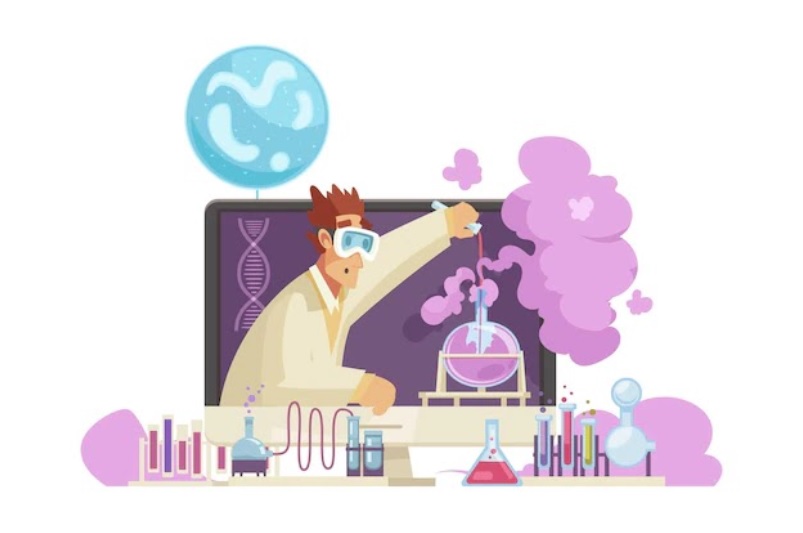P2NP synthesis, or the synthesis of phenyl-2-nitropropene, is a chemical process used in the production of various substances, including pharmaceuticals and illicit drugs. This process involves the conversion of benzaldehyde to P2NP, which is then further modified to produce different compounds. While p2np synthesis plays a crucial role in various industries, it is essential to be aware of the hazards associated with this process. Understanding these hazards can help prevent accidents, protect human health, and ensure the safe handling of dangerous chemicals involved.
The Process of P2NP Synthesis
The process of P2NP synthesis begins with the reaction between benzaldehyde and nitroethane. This reaction, known as the Henry reaction, involves the addition of nitroethane to benzaldehyde in the presence of a catalyst and a base. The resulting product is then further processed to obtain phenyl-2-nitropropene. This compound can be used as a precursor for the synthesis of various substances, including amphetamines and other illicit drugs.
Dangerous Chemicals Used in P2NP Synthesis
P2NP synthesis involves the use of several dangerous chemicals, including benzaldehyde, nitroethane, and various catalysts and bases. Benzaldehyde, a common aromatic aldehyde, is flammable and can cause irritation to the skin, eyes, and respiratory system. Nitroethane, a volatile and explosive liquid, is highly toxic and can cause severe burns upon contact with the skin. Additionally, the catalysts and bases used in P2NP synthesis can be corrosive and toxic, posing significant health risks if not handled properly.
Health Risks Associated with P2NP Synthesis
Exposure to the dangerous chemicals involved in P2NP synthesis can lead to various short-term and long-term health effects. Short-term effects include skin irritation, eye irritation, respiratory problems, and chemical burns. These effects can occur through direct contact, inhalation of chemical fumes, or accidental ingestion. Prolonged exposure to these chemicals can result in more severe long-term health effects, such as organ damage, neurological disorders, and even cancer. It is crucial to take adequate safety measures when working with these chemicals to minimize the risks to human health.
Short-Term Health Effects of Exposure to Dangerous Chemicals
Short-term exposure to the dangerous chemicals used in P2NP synthesis can have immediate health effects. Benzaldehyde, for example, can cause skin irritation, resulting in redness, itching, and rashes. Inhalation of benzaldehyde fumes can irritate the respiratory system, causing coughing, wheezing, and difficulty breathing. Nitroethane, on the other hand, is highly toxic and can cause severe burns upon contact with the skin. It can also irritate the eyes and respiratory system, leading to inflammation and discomfort. Proper protective measures, such as wearing gloves, goggles, and respiratory masks, are essential to minimize these short-term health risks.

Long-Term Health Effects of Exposure to Dangerous Chemicals
Long-term exposure to the dangerous chemicals involved in P2NP synthesis can have more severe health effects. Benzaldehyde, for instance, has been linked to respiratory problems, such as asthma and chronic bronchitis. Prolonged exposure to nitroethane can lead to organ damage, particularly to the liver and kidneys. Some of the catalysts and bases used in P2NP synthesis, such as strong acids or alkalis, can cause corrosion and tissue damage upon contact, leading to long-term complications. It is crucial to implement proper ventilation systems, personal protective equipment, and safe handling practices to minimize the risks of long-term health effects.
Safety Measures for Handling Dangerous Chemicals in P2NP Synthesis
To ensure the safe handling of dangerous chemicals in P2NP synthesis, it is essential to implement appropriate safety measures. This includes working in a well-ventilated area to minimize exposure to chemical fumes and wearing personal protective equipment, such as gloves, goggles, and respiratory masks. Proper storage and labeling of chemicals are also crucial to prevent accidents and minimize the risks of exposure. Regular training on chemical handling, emergency procedures, and first aid can further enhance safety in P2NP synthesis. Employers and employees must collaborate to create a safe working environment and ensure compliance with safety regulations.
Alternatives to P2NP Synthesis and Their Safety
In recent years, there has been an increased focus on finding alternative methods to P2NP synthesis that are safer and more environmentally friendly. One such alternative is the use of biocatalysts, which involve the use of enzymes to facilitate chemical reactions. Biocatalysis offers several advantages, including milder reaction conditions, higher selectivity, and reduced waste generation. By exploring and implementing these alternative methods, the hazards associated with P2NP synthesis can be significantly reduced, making the entire process safer for both the environment and human health.
Conclusion: Importance of Awareness and Precautions in P2NP Synthesis
In conclusion, understanding the hazards and health risks involved in P2NP synthesis is crucial for ensuring the safe handling of dangerous chemicals and protecting human health. Short-term exposure to these chemicals can lead to skin irritation, eye irritation, respiratory problems, and chemical burns. Prolonged exposure can result in more severe long-term health effects, including organ damage and neurological disorders. By implementing appropriate safety measures, such as proper ventilation, personal protective equipment, and safe handling practices, the risks associated with P2NP synthesis can be minimized. Additionally, exploring and adopting alternative methods to P2NP synthesis can further enhance safety and reduce the overall impact on human health and the environment. It is essential for individuals and organizations involved in P2NP synthesis to prioritize awareness, precautions, and compliance with legal regulations to ensure a safer and healthier working environment.
